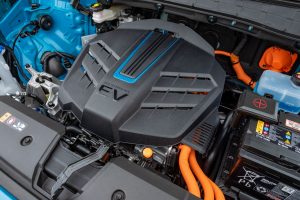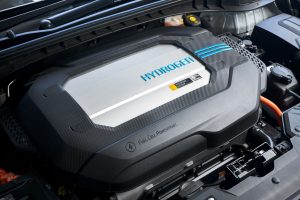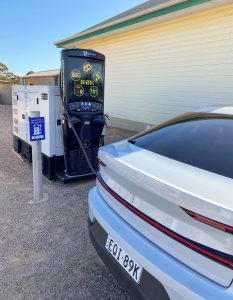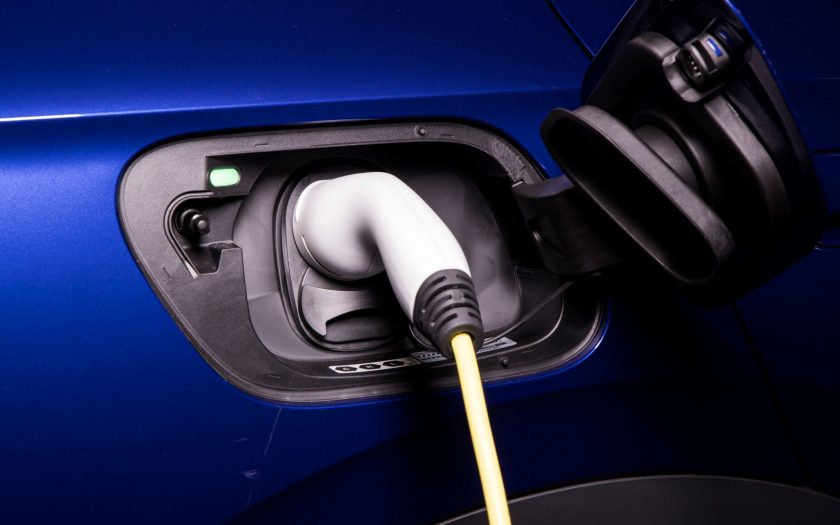WHETHER WE WANT THEM or not, the government is determined to push ahead until we are all driving EVs, despite many people being adamantly opposed and many more being far from convinced.
The National Electric Vehicle Strategy released on Wednesday set Australia’s goals to increase the uptake of electric vehicles (EVs) to meet the country’s target of net-zero emissions by 2050.
Central to these plans is a pledge to introduce a fuel efficiency standard. Australia, along with Russia, is one of the only advanced economies in the world not to have a fuel efficiency standard. Unfortunately, the government is yet to reveal what that standard will look like.
A draft of the policy, which will include details on the fuel efficiency standard, is expected by the end of the year following consultation with industry and community groups.

Despite improvements, Australia is still behind
Roger Dargaville, Monash Energy Institute deputy director, said a fuel efficiency standard would require vehicle manufacturers to meet average emission standards.
This means car companies will have to sell more low-emission vehicles, such as EVs and hybrids, to offset the emissions from high-emission vehicles, such as petrol cars.
“[A fuel efficiency standard] actually provides an incentive for the manufacturers to sell … enough low-emission vehicles to keep their quota within the regulations,” Dr Dargaville said.
“Australia has been lacking good transport policy in general, and [is] one of the last developed countries to have an emission policy for the transport sector.
“So [the National Electric Vehicle Strategy is] long overdue, and very welcome.”
More than 85 percent of the global car market already has vehicle fuel efficiency standards, including the European Union (EU), US, UK, China, Japan, Brazil, India, Canada, South Korea, New Zealand and Mexico.
This leaves Australian drivers paying more at the bowser, with new cars in Australia using 40 percent more fuel than in the EU, 20 percent more than in the US, and 15 percent more than in New Zealand.

EV prices and availability
Australia continues to lag behind the rest of the world in EV take-up.
EV sales accounted for about 9 percent of the global car market in 2021; 15 percent in the UK, 17 percent in the EU and 4.5 percent in the US.
In Australia, EV sales accounted for just 3.8 percent of the national car market in 2022.
Electric Vehicle Council CEO Behyad Jafari said demand is not the issue holding back Australia – car companies simply don’t have the same incentive to import EVs that they do in countries with fuel efficiency standards.
For example, Hyundai has been drip-feeding its Ioniq 5 EVs into Australia, with demand vastly outstripping supply; the 758 Ioniq 5s made available in 2022 regularly sold out within minutes of the limited launches.
“[Hyundai has] recently published that they had 30,000 customers lined up waiting to buy [Ioniq 5s],” Mr Jafari said.
“Our challenge in Australia isn’t ‘How can we convince more Australians to buy electric vehicles?’ We have tens, if not hundreds, of thousands of Australians who want to get their hands on one today.”
“So how can we make more available to Australians, so that they’re able to buy the vehicles … that they want to buy?”
Introducing a fuel efficiency standard would naturally see a wider range of EVs enter the local market, including more affordable options than are currently available.
“There are more electric utes, for instance, available [internationally] than are available to Australian consumers. So [the fuel efficiency standard] would help provide more access to the options that already exist,” Mr Jafari said.
“Our standards aren’t aiming to get car companies to invent new cars.”
“We’re saying these already exist, and they’re available to customers elsewhere in the world … we’ll introduce the same standards that [other countries] have so that [car companies] are required to bring them here.”
The National Electric Vehicle Strategy included a commitment to ensuring 75 percent of new passenger vehicle purchases and leases for the Commonwealth fleet will be low-emissions vehicles by 2025.
So what happens to petrol cars?
The future of new petrol cars once a fuel efficiency standard is put in place is unclear.
Mr Jafari said prices won’t rise more than they already are, while Dr Dargaville said car companies will likely increase the prices of petrol cars to further discourage buyers away from petrol cars and buy EVs to meet their fuel efficiency standard requirements.
Ultimately, drivers stand to make significant savings over the lifetime of a new EV compared to a petrol car.
On average, a petrol car costs about $2400 to fuel annually, while the average EV consumes about $400 worth of electricity per year and tends to have lower maintenance costs as there are only a few hundred parts in an electric car, compared to 2000-plus moving parts in a petrol or diesel-fuelled internal combustion engine vehicle.

Infrastructure needs action
Key to the successful widespread uptake of EVs will be public and private infrastructure that meets demand.
As much as 80 percent of EV charging is done at home in Australia, which usually takes between six and 12 hours.
However, public fast and ultra-fast direct current chargers can get the job done within 15 minutes to an hour.
Dr Dargaville said Australia not only has to adapt the electricity network to cope with increased electric vehicles requiring charging – it should also take a different approach to charging infrastructure than other countries given local reliance on solar power.
“Typically in Europe, the model that’s been used is that vehicles charge overnight at homes, which is fine for Europe where they’re dominated by hydropower and wind energy for their green power,” he said.
“In Australia, we’re dominated by solar power … we therefore want the vehicles to be charged during the day where they’re parked.”
“And so that means adopting infrastructure at workplaces, train stations, shopping centres, etc, where the vehicles are during the day … It’s quite a different model to what we’ve seen in other countries that have relatively high EV uptake, so we need to build the system to suit Australia’s energy infrastructure.”
